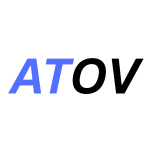1. Introduction – The Rise of Low-Code & No-Code
The startup world has seen a dramatic shift in recent years. Entrepreneurs no longer need extensive coding skills to launch innovative digital businesses.
Low-code and no-code platforms allow anyone to build apps, websites, and workflows quickly and cost-effectively, turning ideas into functioning products in days or weeks instead of months.
2. What Are Low-Code and No-Code Platforms?
-
Low-Code: Platforms that require minimal coding, allowing some customization for advanced functionality
-
No-Code: Platforms that require zero coding, using drag-and-drop interfaces and pre-built templates
Both empower non-technical founders to create startups without hiring expensive developers.
3. Benefits of Using Low-Code & No-Code Tools
-
Speed: Launch MVPs quickly
-
Cost-Effective: Reduce development and hiring costs
-
Flexibility: Easily make updates and changes
-
Scalability: Many platforms support growth and integrations
-
Focus on Business: Concentrate on marketing, sales, and strategy rather than coding
Chart Example – Benefits of Low-Code & No-Code Platforms
4. Key Categories of Tools
a) Website Builders
-
Platforms: Wix, Webflow, Squarespace
-
Purpose: Build professional websites with drag-and-drop interfaces
b) Mobile App Builders
-
Platforms: Bubble, Adalo, Glide
-
Purpose: Build apps for iOS and Android without coding
c) Automation & Workflow Tools
-
Platforms: Zapier, Make, Integromat
-
Purpose: Automate repetitive tasks and integrate multiple apps
d) E-Commerce Platforms
-
Platforms: Shopify, BigCommerce, WooCommerce
-
Purpose: Launch online stores quickly, manage products, payments, and orders
e) SaaS & Web App Builders
-
Platforms: Airtable, Retool, OutSystems
-
Purpose: Build web applications, dashboards, and internal tools
5. Popular Low-Code & No-Code Tools for Startups
| Tool | Type | Purpose/Use Case |
|---|---|---|
| Webflow | Website Builder | Portfolio, SaaS landing pages |
| Wix | Website Builder | Simple business websites |
| Squarespace | Website Builder | Blogs, creative sites |
| Bubble | App Builder | Full web apps, marketplaces |
| Adalo | Mobile App Builder | iOS & Android apps |
| Glide | Mobile App Builder | Data-driven mobile apps |
| Zapier | Automation | Integrating apps & automating tasks |
| Make | Automation | Workflow automations |
| Shopify | E-Commerce | Online stores |
| BigCommerce | E-Commerce | Scalable online retail |
| Airtable | SaaS / Web App | Database-driven apps |
| Retool | SaaS / Web App | Internal business dashboards |
| OutSystems | Low-Code Enterprise Apps | Enterprise-grade apps |
6. Step-by-Step Guide to Launching a Startup Using Low-Code/No-Code Tools
Step 1: Define Your Idea Clearly
-
Identify the problem your startup solves
-
Outline key features and user flow
Step 2: Choose the Right Platform
-
Consider your target audience, platform type, and scalability
-
Match the platform to your technical comfort and business needs
Step 3: Build a Minimum Viable Product (MVP)
-
Use pre-built templates and drag-and-drop interfaces
-
Launch a basic version to test market demand
Step 4: Integrate Automation & Analytics
-
Use tools like Zapier or Make to automate workflows
-
Connect Google Analytics or Mixpanel to track user behavior
Step 5: Launch & Market Your Startup
-
Promote via social media, email campaigns, and influencer marketing
-
Gather feedback for improvements
Step 6: Iterate and Scale
-
Improve features based on user feedback
-
Add advanced functionalities as your startup grows
7. Common Mistakes to Avoid
-
Overcomplicating MVP – focus on essential features
-
Ignoring user feedback – iterate based on real data
-
Skipping automation – save time by connecting apps
-
Choosing the wrong platform – consider long-term scalability
-
Neglecting design – user experience is key
8. Real-World Examples of Startups Built Without Code
-
Qoins – Debt repayment app using Bubble
-
Comet – Freelance marketplace built with Webflow
-
Dividend Finance – Financial platform using OutSystems
-
Plato – Mentorship platform built on Glide
-
NuMoney – Personal finance tools built with Airtable & Zapier
These examples show how non-technical founders can create scalable, profitable startups with low-code and no-code tools.
9. Future Trends in Low-Code & No-Code Development
-
AI-Powered App Creation: Automatic code generation and app design
-
Integration with Blockchain & Web3: Decentralized apps built without code
-
Advanced Analytics & Personalization: AI-driven insights and automated personalization
-
Cross-Platform Development: Single builds for web, mobile, and desktop
-
Community & Template Marketplaces: Sharing pre-built solutions for rapid deployment
10. Conclusion
Low-code and no-code tools democratize entrepreneurship, allowing anyone to turn ideas into real startups without coding skills.
By choosing the right platform, building an MVP, integrating automation, and iterating based on feedback, founders can launch, test, and scale digital businesses efficiently.
In 2025, speed, flexibility, and affordability make low-code/no-code platforms an essential tool for aspiring online entrepreneurs.
11. Charts & Visual Insights
Chart 1 – Popular Low-Code/No-Code Platform Types
Chart 2 – Benefits of Low-Code/No-Code Platforms
Visual Enhancements:
-
Flowchart: Idea → Platform Selection → MVP → Launch → Automate → Scale
-
Infographic: Top 10 Low-Code/No-Code Tools for Startups
-
Pie chart: Distribution of Tool Types Among Non-Technical Startups
